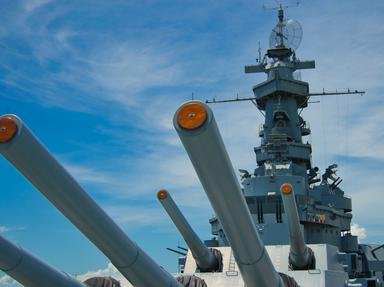Quiz Answer Key and Fun Facts
1. After the fall of the Marianas in June 1944 Imperial General Headquarters conceived a defensive plan to commit all the remaining assets of the Navy for a decisive battle to counter the next American move. This was known as the:
2. The Japanese defence plan was a typically complicated affair with naval groups divided into __________ Forces
3. The Japanese plan began to unravel almost straight away when the Centre Force was ambushed by the US submarines _______ and __________.
4. A clearly shaken Admiral Kurita continued to lead his depleted Centre Force up the Palawan passage and then turned eastward to proceed through the central Philippines across the ____________ Sea.
5. As the Third Fleet prepared to launch the first strikes on Kurita's Centre Force incoming land based Japanese aircraft were spotted on radar and one of them managed to break through the fighter screen to drop a bomb on the carrier USS ____________ which eventually became a total loss.
6. Throughout the day of the 24th a sustained series of air-strikes was launched against Admiral Kurita's Centre Force and the Battleship ____________ soon succumbed to the massive assault
7. Following enthusiastic reports from his excited flyers, Admiral Halsey came to the conclusion that Kurita's battered force was retreating and no longer posed an immediate threat to the landings at Leyte
8. Admiral Nishimura's Southern Force was steaming toward the southern entrance to the Leyte Gulf through which Strait?
9. Vice Admiral Jesse Oldendorf, leading six old battleships from the landing support contingent of the Seventh Fleet, was dispatched to confront Nishimura's Southern Force. The intelligence supplied by Coastwatchers enabled him to place his force in the perfect position to ________ _ ________ _.
10. On the evening of the 24th Halsey led his fast carrier and battleship groups north to take on Ozawa's Northern Force consisting of four of Japan's remaining carriers, three cruisers and nine destroyers which he perceived to be the greater threat. The action that followed was later colloquially referred to by Navy people as which battle?
11. Kurita couldn't believe his luck when he emerged at daybreak of the 25th to find the exit to the passage unguarded! As he charged down the east coast of Samar towards the landings the only force between him and the vulnerable LST's and Liberty ships supporting the landings on Leyte was a force called __________.
12. The unequal action lasted for over two hours before the first carrier succumbed to shellfire from the Japanese battleships. Which carrier was this?
13. Meanwhile 500 km to the north Halsey's force was attacking Ozawa's Northern Force with his carrier aircraft. He started receiving increasingly desperate messages from Admiral Kinkaid of the Seventh Fleet and finally one from Admiral Nimitz who had been monitoring the battles from his HQ in Hawaii which when handed to Halsey read: "Where is RPT where is Task Force 34 RR ________ ________ ________ ". What was the missing phrase?
14. Even without the help of Task Force 34 Mitschner's carrier planes soon dispatched four of Ozawa's carriers in a day-long assault. Which four carriers were sunk?
15. An ominous postscript occurred at the end of the climactic day when Japanese Kamikaze aircraft struck the Seventh Fleet and succeeded in sinking the escort carrier __________ .
Source: Author
mstanaway
This quiz was reviewed by FunTrivia editor
bloomsby before going online.
Any errors found in FunTrivia content are routinely corrected through our feedback system.

